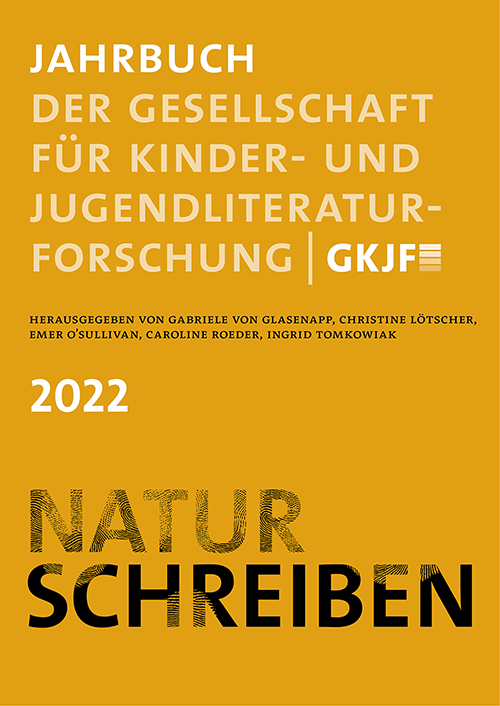Biodiversität und Naturschutz in Nils Holgerssons wunderbare Reise durch Schweden (1906/1907)
DOI:
https://doi.org/10.21248/gkjf-jb.89Abstract
[English title and abstract below]
1901 bat der Reformschullehrer Alfred Dalin im Auftrag von Sveriges allmänna folkskollörareförening (Schwedens allgemeiner Volksschullehrervereinigung) die ehemalige Lehrerin und populäre Autorin Selma Lagerlöf um die Erstellung eines neuen Geografielehrbuchs. Gedacht war an eine Anthologie verschiedener Texte, doch Lagerlöf bestand darauf, ein zusammenhängendes künstlerisches Werk zu verfassen. So entstand die Geschichte von Nils Holgersson, der auf dem Rücken einer Gans durch Schweden reist.
Aufbauend auf Ansätzen aus Ecocriticism und Cultural and Literary Animal Studies untersucht mein Artikel Beziehungen zwischen dem Schulbuch und dem ökologischen Diskurs um 1900, mit einem Fokus auf der Rolle von biologischer und ästhetischer Vielfalt in Nils Holgerssons wunderbarer Reise durch Schweden. Biologische und ästhetische Vielfalt bilden in dem Schulbuch eine Einheit, so meine These, die mit dem ökologischen Denken um 1900 korrespondiert. Das Schulbuch vereint unterschiedliche Stimmen, Genretransgressionen und eine komplexe linguistische und narrative Struktur. Seine einzigartige Verbindung von Fakten und Fiktion ermöglicht es, diese formalen Eigenschaften in Beziehung zu setzen zu Reflexionen über biologische Vielfalt in Nils Holgerssons wunderbarer Reise durch Schweden und im Naturschutzdiskurs um 1900.
Biodiversity and Nature Conservation in The Wonderful Adventures of Nils (1906/1907)
In 1901, the progressive educator Alfred Dalin, on behalf of the Swedish Primary School Teachers Association, asked the former teacher and popular author Selma Lagerlöf to create a new geography textbook. They had an anthology of texts in mind, but Lagerlöf insisted on writing a new work instead. The story of Nils Holgersson, who travels through Sweden on the back of a goose, is the famous result. Based on approaches from ecocriticism as well as cultural and literary animal studies, this article examines the relationship between the textbook and environmental discourse around 1900. It postulates that biological and aesthetic diversity in The Wonderful Adventures of Nils form a unit in the textbook, a unit that corresponds to ecological thinking around 1900. The textbook contains a variety of voices; it transgresses genres and has a complex linguistic and narrative structure. Its original combination of fact and fiction makes it possible to relate these formal features to reflections on biological diversity in the book itself and in environmental discourse around 1900.
Downloads
Veröffentlicht
Ausgabe
Rubrik
Lizenz
Copyright (c) 2022 Jahrbuch der Gesellschaft für Kinder- und Jugendliteraturforschung

Dieses Werk steht unter der Lizenz Creative Commons Namensnennung - Nicht-kommerziell 4.0 International.





